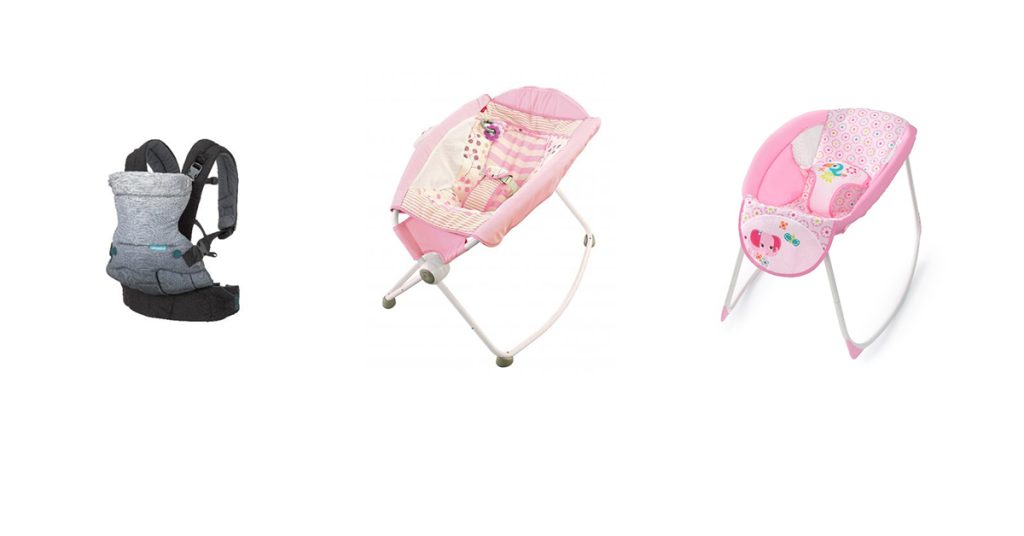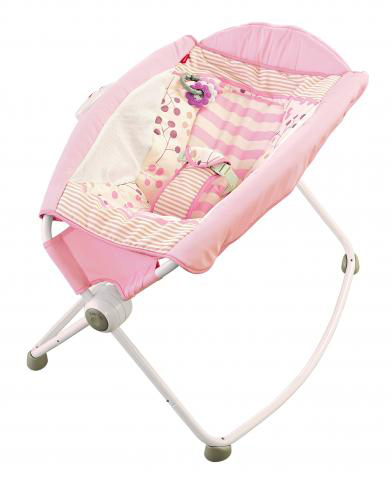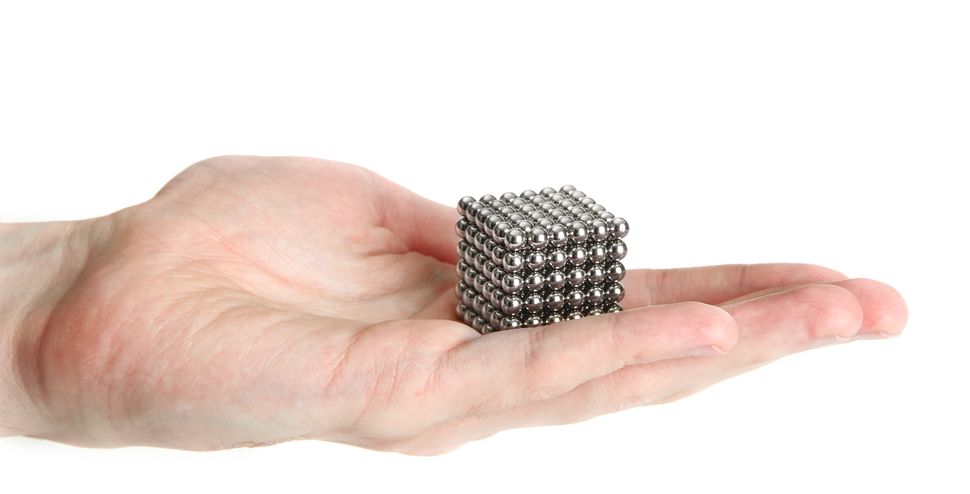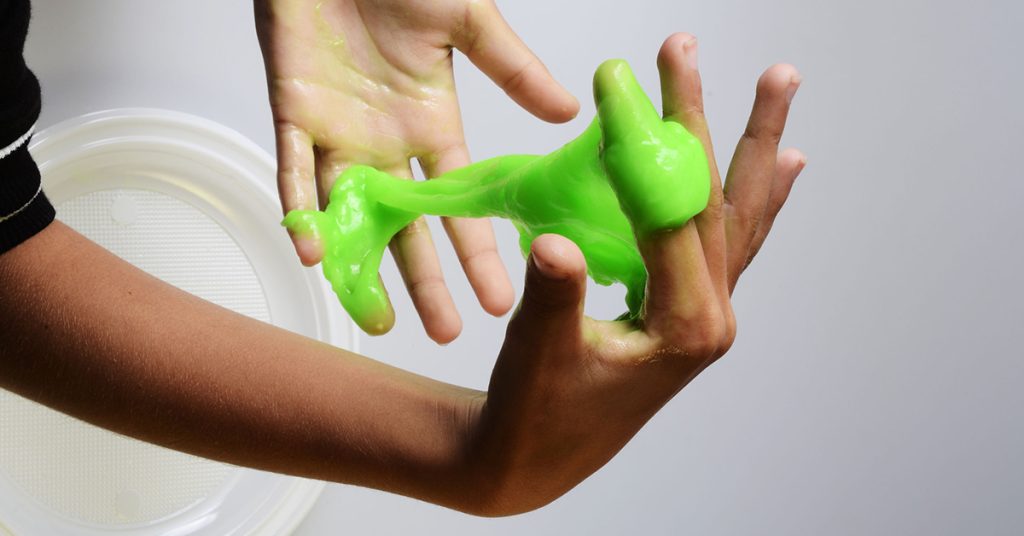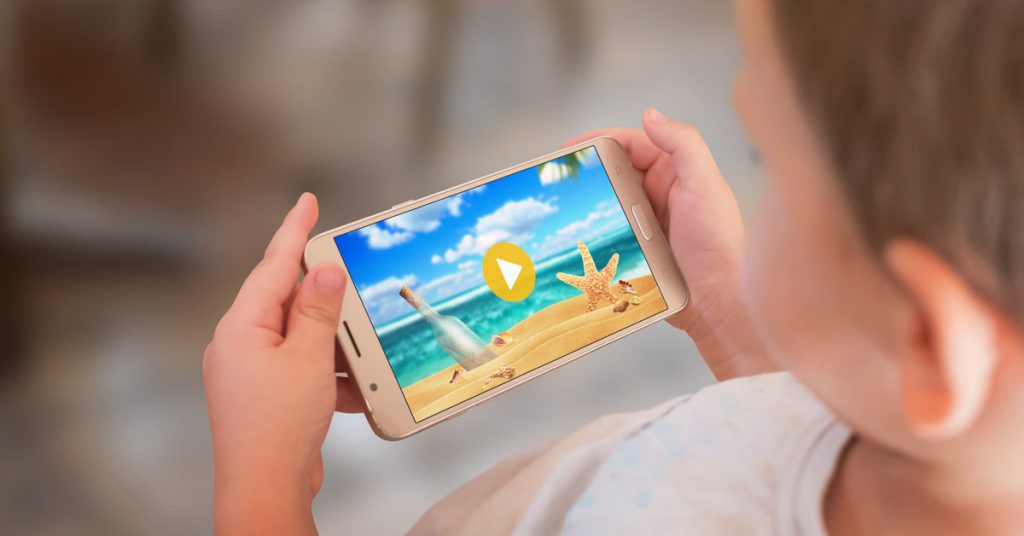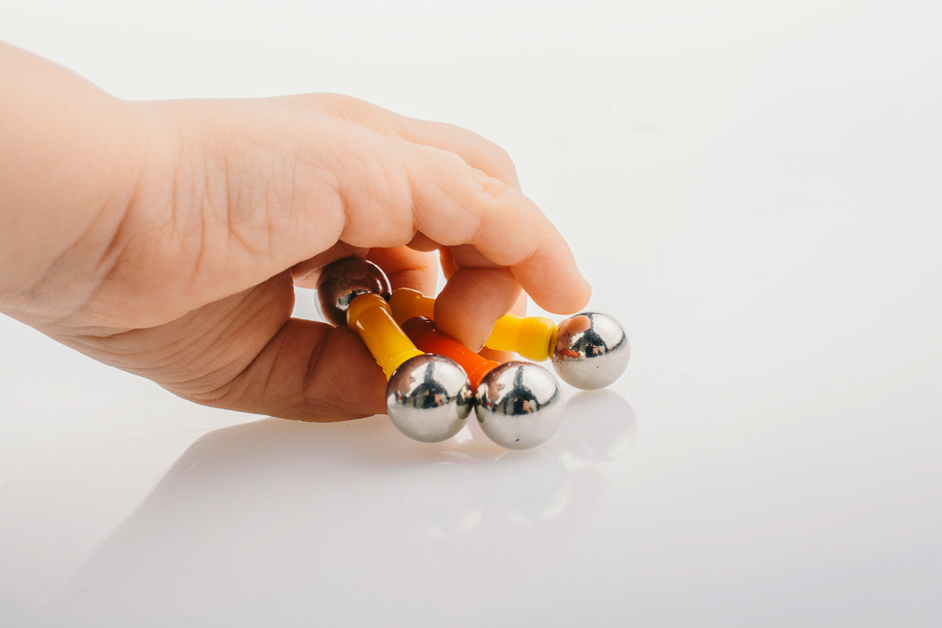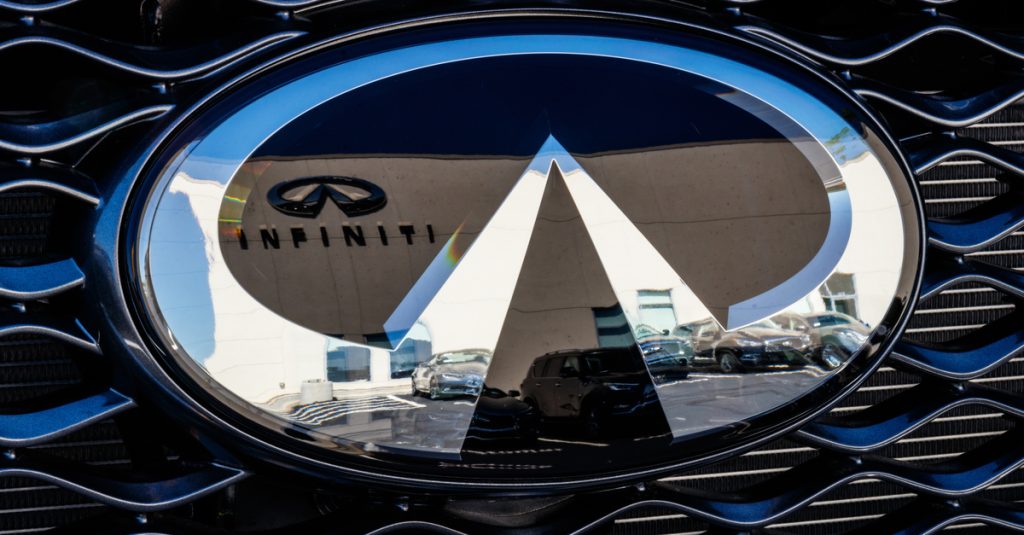Products Liability
FDA Warning: Stop Taking Zantac and Ranitidine Medications
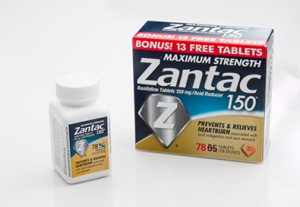 If you take Zantac or ranitidine, it is time to change your medication. On April 1st, the Food and Drug Administration (FDA) asked manufacturers to immediately withdraw all medication from the market. This is due to concerns it contains a chemical which could cause cancer.
If you take Zantac or ranitidine, it is time to change your medication. On April 1st, the Food and Drug Administration (FDA) asked manufacturers to immediately withdraw all medication from the market. This is due to concerns it contains a chemical which could cause cancer.
You will no longer be able to purchase the medication over the counter or refill existing prescriptions, according to the FDA. The agency has recommended alternative medications which you can discuss with your physician. While this announcement may come as a surprise during the COVID 19 outbreak, many had anticipated this move after the FDA’s initial warning last September and the subsequent recall of Zantac, the popular brand name medication, in October. Many other manufacturers have also issued voluntary recalls over the past six months.
The FDA announced testing showed ranitidine contained the contaminant N-Nitrosodimethylamine, or NDMA, which is a probable human carcinogen. The agency said the decision was made on the “best available science.” NDMA is a known environmental containment which is already present in our surroundings. It is found in water, meat, dairy and vegetables, but at low levels is “not be expected to lead to an increase in the risk of cancer,” according to the FDA.
When testing ranitidine, the FDA said it did not observe unacceptable levels in many drug samples. But ultimately, the agency decided the drug should not be available to consumers unless the quality can be assured.
Specifically, testing found the NDMA levels in some products increased in rising temperatures, which may be involved in distribution and a patient’s handling of the drug. And as the ranitidine product aged, so did NDMA levels.
This new FDA announcement will impact many people and present challenges. Patients can usually remember their daily medications. But Zantac is typically a short-term medication which is available in many ways, over-the-counter, by prescription or in a hospital. Because of this, many people may recall suffering from heartburn or a stomach ulcer, but may not remember which medication they took. Another challenge is the medication was sold under many brand names.
If you used Zantac or ranitidine, then experienced cancer or other illness or symptoms, you may want to learn more to guide you in your future medical care. You may also have the right to seek financial compensation to pay for your medical bills and other losses. At Breakstone, White & Gluck, our Boston product liability lawyers are now reviewing cases for patients who may be affected by Zantac and ranitidine injuries. For a free no-obligation legal consultation, call (800) 379-1244 or (617) 723-7676.
Here are a few points to remember:
Look for product names of ranitidine medications
Zantac was widely used. According to USA Today, before recall, there were 15 million prescriptions of Zantac annually. The manufacturer was Sanofi.
However, ranitidine was also sold under other names. It was manufactured by Dr. Reddy’s Laboratories Ltd., which manufactured ranitidine products sold by Dr. Reddy, Kroger and Walgreens. Brand names included American Health Packaging, Glenmark Pharmaceuticals, Precision Dose, Appco Pharma, Sandoz Inc. (a division of Novartis) and Northwind Pharmaceuticals.
Talk to your doctor about your ranitidine use
If you are taking a medication for heartburn or ulcers, carefully read the product labeling to see if it contains ranitidine.
If you are taking a ranitidine medication, stop and contact your primary care physician. The FDA recommends patients take an alternative heartburn medication, such as Pepcid (famotidine), Tagamet (cimetidine), Nexium (esomeprazole), Prevacid (lansoprazole) or Prilosec (omeprazole). Discuss these with your physician. There have been no NDMA impurities found with these products, according to the April 1st announcement.
You may be thinking you don’t want to reach out to your doctor during the COVID-19 emergency, but this type of preventative step is important. You may have other medical conditions or other medications which you need to consider. Your doctor can advise you on how to take your medications safely.
Take care to safely dispose the medication
Due to the COVID 19 outbreak, the FDA is advising consumers to follow the disposal directions on packaging and dispose of medications at home, rather than a drug take-back location in your community.
Zantac lawsuits have already been filed, with more expected
Patients have already filed Zantac lawsuits, alleging Sanofi, the manufacturer, failed to warn consumers that the medication contained NDMA and of potential risks. Our personal injury lawyers are advising and representing Massachusetts residents who may have been affected.
Free Legal Consultation – Breakstone, White & Gluck
With more than 100 years combined experience, Breakstone, White & Gluck represents those injured by defective products, including unsafe medication and defective medical devices in Massachusetts. If you have taken Zantac or another ranitidine medication subject to FDA action, you may have suffered illness and want to learn more about your legal rights. Contact our attorneys now.
For a free legal consultation, call our Boston product liability lawyers at (800) 379-1244 or (617) 723-7676. You can also send a message through our contact form.
Baby Carriers Are Latest Children’s Product Recall
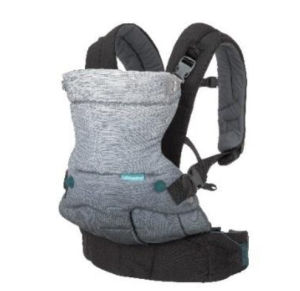 Parents place a great deal of trust in baby carriers to support their children. However, you should now check yours because it may not be as safe as you think.
Parents place a great deal of trust in baby carriers to support their children. However, you should now check yours because it may not be as safe as you think.
The Consumer Product Safety Commission (CPSC) issued a Feb. 6th recall notice for about 14,000 Infantino baby carriers sold by Amazon and Target between Nov. 15 and Dec. 20, 2019. Because the recalls took place over the holiday season, parents could have purchased a baby carrier or received one as a holiday gift.
While no injuries have been reported, the buckles on the infant carriers can break, causing a child’s fall. Parents should stop using the front-facing baby carriers and request a free replacement.
The Infantino carriers have a black or gray body, with black straps, and a front pocket. Look for the code sewn inside the carrier. This is the place to start because baby carriers often look similar.
|
Go Forward 4-in-1 Evolved Ergonomic Carrier |
2018 0619 |
|
Go Forward 4-in-1 Evolved Ergonomic Carrier |
2018 0719 |
|
Flip Front2back Carrier |
2018 0719 |
|
Up Close Newborn Carrier |
2018 0719 |
High Rate of Children’s Products Recalls
As you check if your baby carrier was recalled, look around your home for other children’s products, such as strollers, car seats, cribs and other baby furniture. Take a minute to visit the CPSC website and type in the product name. This is a good time of year to check children’s products because you may be using some of them more in the nice weather.
Children’s products have a high rate of recalls so it is best to check a few times of year and follow the news and the CPSC website. Manufacturers do not always contact parents directly and there are times parents may be using a hand-me-down recall product, making it harder to track product recalls or news about injuries.
But so far, 2020 has been a year to follow recall news. Just as the holiday season ended, a series of children’s product recalls began. On January 16th, the CPSC announced the recall of 2,000 “Baby Trend” strollers sold by Amazon and Target. Those too could drop children should the stroller hinge joints release and collapse under pressure.
Then on January 29th, the CPSC announced the recall of 165,000 infant sleepers from Summer Infant, Graco, Delta Enterprise Corp. and Evenflo. The inclined sleepers are the latest recalls in the wake of the Fisher-Price Rock ‘n Play, which was recalled in April 2019.
As authorities continue to investigate, families have reported more than 70 infant deaths in inclined infant sleepers. University of Arkansas researchers have studied these sleepers and recommended infants sleep on flat surfaces or less than a 10 degree incline if any. The Fisher-Price Rock ‘n Play and other sleepers placed children at a 30 degree incline, creating a risk for suffocation when infants attempted to turn.
Free Legal Consultation – Boston Product Liability Lawyer
Breakstone, White & Gluck has obtained record results for plaintiffs in Massachusetts cases involving personal injury, medical malpractice and product liability. If you or a loved one has been injured by an unsafe or defective product, our attorneys can advise you of your legal rights to seek compensation. For a free legal consultation, contact our product liability attorneys at 800-379-1244 or 617-723-7676 or use our contact form.
Infant Sleeper Recalls Continue Nearly a Year After Fisher-Price
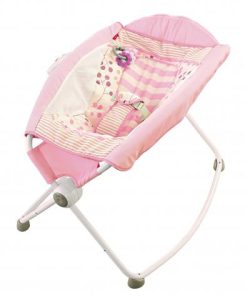
Nearly a year after the Fisher-Price Rock ‘n Play recall, the work continues to remove unsafe sleepers from the market.
After more than 70 infant deaths involving inclined sleepers, the Consumer Product Safety Commission (CPSC) and lawmakers continue working to prevent injuries.
The CPSC recently announced the recalls of over 165,000 infant sleepers from four companies: Summer Infant, Evenflo, Delta Enterprise Corp. and Graco. Thankfully, these recalls are not related to any deaths or injuries. They are part of the CPSC’s ongoing work to protect children after Fisher-Price’s startling revelations about its Rock ‘n Play, which has been linked to dozens of infant deaths. However, these models have not been linked to injuries, according to the CPSC and at least one company initially refused the CPSC’s efforts.
Graco is recalling the largest number of units, 111,000 Graco Little Lounger Rocking Seats. Sumr Brands is recalling 43,000 SwaddleMe By Your Bed Sleepers. Delta Inclined Sleepers is recalling about 5,900 units and Evenflo has about 3,100 units involved in the recall.
If you own one of these sleepers, you can read the recall notices on the CPSC website. You should be able to contact the manufacturer and return your sleeper for a cash refund or a voucher.
Consumers are urged to stop using the inclined infant sleepers. It is better to return the infant sleepers, rather than discard them in the trash.
Fisher-Price Rock ‘n Play
Parents received the first frightening warning about inclined infant sleepers last April, when Fisher-Price issued an advisory for parents, initially announcing 10 babies had died in the sleeper after turning from their back to their stomach, then suffocating. The company warned parents not to let children use the sleeper after 3 months old.
Within days, facing outrage from parents and new allegations, Fisher-Price acknowledged more deaths and had to replace its advisory with a recall notice for 4.7 million Rock n’ Play sleepers. Because this product was sold for 10 years, this has been a massive recall. Adding to the challenge is so many companies have followed Fisher-Price’s lead and developed similar inclined sleep products.
After Fisher-Price, we learned that Kids II was also facing allegations that several infants had died in its sleepers. The company recalled 700,000 products in late April, just a few weeks after Fisher-Price took action.
Federal Legislation to Ban Inclined Sleepers
The CPSC has been working with other companies to identify unsafe sleepers while advising consumers not to use inclined sleep products. The Fisher-Price sleeper and other models are dangerous because they sit at a 30 degree incline. Babies can roll over and suffocate. The American Academy of Pediatrics (AAP) advises parents to put infants on flat surfaces to sleep and remove blankets, toys and other items. Researchers from the University of Arkansas have also recommended flat surfaces for sleeping and have said any incline should fall under 10 degrees.
Federal legislation has been proposed to ban inclined these sleepers altogether. According to Consumer Reports, the Safe Sleep for Babies Act has already passed in the House of Representatives. If this happens, the CPSC will not have to pursue product recalls one by one and negotiate with each manufacturer.
Boston Product Liability Lawyers – Boston Personal Injury Lawyers
Free Legal Consultation
Breakstone, White & Gluck has over 100 years combined experience representing those injured by the negligence of others in Massachusetts. Our attorneys have extensive experience in the area of product liability and defective products. For a free legal consultation, contact our firm at 800-379-1244 or 617-723-7676 or use our contact form.
Voluntary Safety Standard Unlikely to Prevent Children’s Magnet Injuries, Advocates Warn
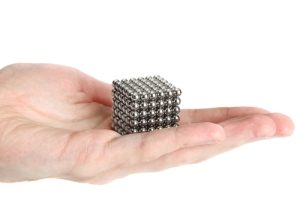
There is a disturbing new report out about children ingesting rare-earth magnet sets at an accelerated rate since 2016, when the industry overturned a federal sales ban in court. The magnet industry now markets these powerful cluster sets to adults, but children continue to swallow them. Parents can take precautions by double checking holiday gifts and discarding any of these products.
The Consumer Product Safety Commission (CPSC) issued a rule banning the small rare-earth magnet sets in 2014 after hundreds of children reportedly ingested the magnets. The rare-earth magnets were (and still are) about 10 times as strong as other magnets. The CPSC’s ban required magnetic parts to have a lower force of attraction of 50 kG² mm² or less.
According to The Washington Post, child ingestions had dropped after the ban was implemented. Injuries dramatically rose between 2017 and 2019, with an estimated 1,580 ingestions this year.
Magnet makers are now working to establish a voluntary safety standard to avoid future attempts at regulation. With the committee votes due in January, The Washington Post reports safety warnings may be added, but actual product changes are unlikely.
The Washington Post reported on many aspects of the process, including:
Voting members. The ASTM International organization oversees the process for creating voluntary safety standards for consumer products. The committee set to vote includes safety advocates and magnet industry officials or those with ties to the industry. CPSC staff is involved, but do not lead the process.
One potential issue is the number of voting members has shifted recently from 36 to 33, according to The Washington Post. The magnet industry can only represent 49 percent of the vote according to ASTM guidelines, but the industry and members with ties to the industry accounted for 55 percent of the vote when the story was published. The newspaper also reported some of the voting members were incorrectly categorized.
No agreement on magnet size. Some of the committee members want to make the magnets too large to swallow and/or decrease the strength to reduce the risk a child’s risk of organ damage. These committee members asked about increasing the magnet size to 1.25 inches in diameter. This would fall more into line with the federal “small parts” law which requires toys to carry a choking hazard warning if any parts fit through a cylinder with this diameter. The bottom of the testing cylinder is slanted, opening 1 to 2.25 inches. The choking hazard warning must also state, “Not for children under 3 yrs.”
Industry officials oppose, saying the proposal would make the tiny magnets six times as large and also increase the magnet force.
The ballot calls for adding new safety warnings on packaging and a change so consumers can visually check that all the advertised magnets are inside the box. There are no other changes.
While a voluntary safety standard should improve safety, a CPSC commissioner told The Washington Post the process can actually cost lives. Rare-earth magnets are just one story when change isn’t about protecting children, but protecting an industry. As a consumer, take time to really read just what the safety warnings and labels say.
The CPSC offers an online database for product recalls and updates. You may find advisories associated with certain types of products before a formal recall occurs. Other organizations – such as Consumer Reports, the American Academy of Pediatrics and Safe Kids – also publish valuable information and insights. Subscribe to newsletters and learn as much as you can about shopping for children’s products and toys.
Breakstone, White & Gluck shares product recalls on our blog and Facebook page. Read more about rare-earth magnets and magnet gifts for children in our recent blog, “Keep Magnet Toys Off Your Holiday Shopping List.”
About Breakstone, White & Gluck – Boston Product Liability Lawyers
With more than 100 years combined experience, Breakstone, White & Gluck has expertise in handling all types of product liability claims, including those involving defective consumer products, dangerous toys, unsafe vehicles and hazardous medical devices. Our Boston product liability lawyers represent clients who have been injured by negligence throughout Massachusetts, from Boston to Plymouth to Cape Cod, Worcester, Western Massachusetts and the North Shore.
For a free legal consultation with one of our attorneys, call us today at 800-379-1244 or 617-723-7676. You can also use our contact form.
Worst Toys of 2019 List Showcases Holiday Hazards
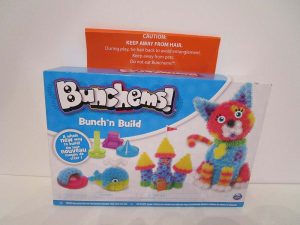
Photos: Worst Toys of 2019, W.A.T.C.H.
The Worst Toys of 2019 list has been released, providing parents and grandparents a preview of toys to avoid this holiday season. We urge you to read this list before you shop. Each toy mentioned has caused injury or has grave potential. We want Massachusetts families to steer clear and enjoy a safe and happy holiday season.
As you read, remember there are just 10 spaces on the Worst Toys list, which is compiled by W.A.T.C.H. – or World Against Toys Causing Harm, Inc. Yet there are far more toys out there which may be unsafe or inappropriate for your child’s age. Read our blog on the Worst Toys list, to help you identify common features in unsafe toys, such as small parts which could cause choking injuries.
Toy injuries are a daily risk for many families in Massachusetts, not just during the holidays. Across the country, 251,700 people suffered toy-related injuries in 2017. From 2015 to 2017, 37 children died while playing. These devastating numbers are preventable if manufacturers, distributors and retailers safely handle products throughout the supply chain. Parents can do their part by always reading and following age recommendation labels. Remember you also have help on this front. You can check the Consumer Product Safety Commission’s website for product warnings and recalls before you shop this holiday season, and throughout the year. You can also sign up for e-mail alerts.
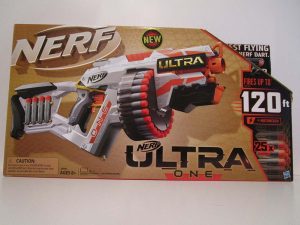 1- Nerf Ultra One
1- Nerf Ultra One
Though it looks like a blast, this Nerf toy is a $49.99 danger, W.A.T.C.H. says. The dart blaster shoots up to 120 feet and claims to be the “Farthest Flying Nerf Dart. Ever.” It carries an age recommendation of 8 and up, with several troubling warnings. W.A.T.C.H. reports the darts can be shot with enough force to cause eye injuries.
2 – Spike the Fine Motor Hedgehog
Spike is a risky toy because he comes with 12 removable quills, all 3 ½ inches long, W.A.TC.H. The problem is the packaging carries an age recommendation of 18+ months. This is deceptive, leading parents into conclude this is a safe toy for young children of that age. The age recommendation should be higher and carry a choking hazard label.
3 – Bumchems Bunch’N Build
These building toys stick together and make cute formations. What’s not cute is how they can get caught in your child’s hair. The manufacturer is clearly aware of this potential, advising parents to keep their child’s hair pulled back to avoid entanglement. Although they continue selling it, you don’t have to buy it. Carefully consider how your child and what could happen if you leave the room for a moment.
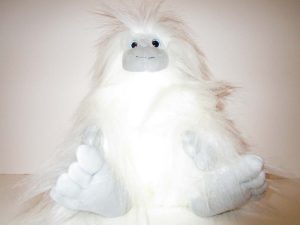 4 – YETI
4 – YETI
Pull at this doll’s white fur and with little effort, it becomes loose. Then it gathers, creating a choking hazard. The $21 toy is being sold everywhere this year, including Walmart.com, Target.com and Amazon.com. W.A.T.C.H. critically notes the toy has a recommendation of 24 months and up – on a removable sticker. Once this sticker comes off, consumers have to guess at the appropriate age.
Age recommendations are the most fundamental tool parents have in choosing safe toys. A removable label makes it hard to make safe choices, especially if you are handing the toy down between children.
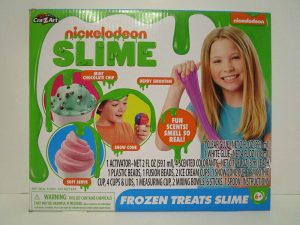
5- Nickelodeon Frozen Treats Slime
What can we say about this $9.99 slime toy? Or is it food? The truth is, it is a chemical which if ingested, can seriously harm your child. The confusing part is this slime really looks like a frozen treat on the box.
We urge you not to buy slime mixtures or any type of pretend food. There are plenty of other gift options. Traditional crafts such as drawing sets or even Play Doh are better choices. They don’t require any mixing of ingredients.
6 – Anstoy Electronic Toy Gun
W.A.T.C.H. is always critical of marketing realistic toy guns to children and has highlighted the practice over many years. This year it says the Anstoy electronic gun is being unsafely marketed for children age 14+ and can be found online by anyone with an Amazon account. We agree: steer clear of guns and choose toys which involve sports. A soccer ball, basketball or a new snowsled sound like great gifts to us!
7 – Diecast School Bus
This miniature school bus is a choking hazard because the small rubber tires can become loose. They are mounted on plastic wheels and can be pulled apart. So many toys have similar hazards and should be kept out of homes with younger children.
8 – Pogo Trick Board
This toy is a “high bounce ball” with dual handles for “tricking out.” The age recommendation is children 6 and up. The manufacturer warns children to wear a helmet to protect against head injuries. But the packaging shows two children using the board without a helmet. There is one child bouncing high while wearing a helmet, but overall, there’s not a strong advisory to parents.
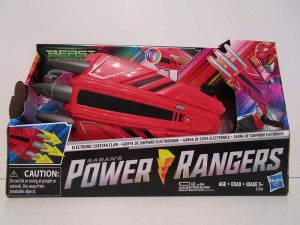 9 – Power Rangers Electronic Cheetah Claw
9 – Power Rangers Electronic Cheetah Claw
“Do not hit or swing at people or animals.” “Use away from breakable objects.” Finally, this toy carries a small parts warning, even though the age recommendation is 5+.
With so many warnings, why would you want to buy this toy? It may look cool to your child, but you have to remember it’s winter in Massachusetts. This is not a toy you want your child swinging around your home. Hasbro, the manufacturer, says the toy can cause potential eye or facial injuries.
10 – Viga Pull Along Caterpillar
This is an adorable toy, but it made the W.A.T.C.H. list because of its long string. This could cause a potential choking or strangulation hazard. The Viga Pull Along Caterpillar is a pull toy and should have a warning to go with its 24-inch cord.
Read more from the Worst Toys of 2019 on the W.A.T.C.H. website.
About Breakstone, White & Gluck – Free Consultation
Boston Product Liability Lawyers – Boston Defective Toy Lawyers
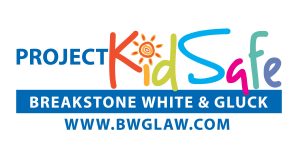 Breakstone, White & Gluck is experienced in representing those injured in Massachusetts in cases involving product liability and defective products. Manufacturers have a responsibility to conduct safety testing and properly label toys with age recommendations. When they neglect this responsibility, toys are not safe to use.
Breakstone, White & Gluck is experienced in representing those injured in Massachusetts in cases involving product liability and defective products. Manufacturers have a responsibility to conduct safety testing and properly label toys with age recommendations. When they neglect this responsibility, toys are not safe to use.
We share this blog as part of our holiday toy safety series and our Project KidSafe campaign. Learn more about Breakstone, White & Gluck and our work for clients on our website.
Take Caution Buying Children Digital Toys, Tablets and Apps
 Many children are asking for tablets, video games and digital toys this holiday season. Before you buy, really learn what you are introducing – and our suggestion is consider waiting. This year, companies such as Google were pressured to change their data collection practices. In 2020, we may just see some change from other companies, too. Read More
Many children are asking for tablets, video games and digital toys this holiday season. Before you buy, really learn what you are introducing – and our suggestion is consider waiting. This year, companies such as Google were pressured to change their data collection practices. In 2020, we may just see some change from other companies, too. Read More
Holiday Toy Safety: Check for Age Recommendations and Choking Hazard Labels
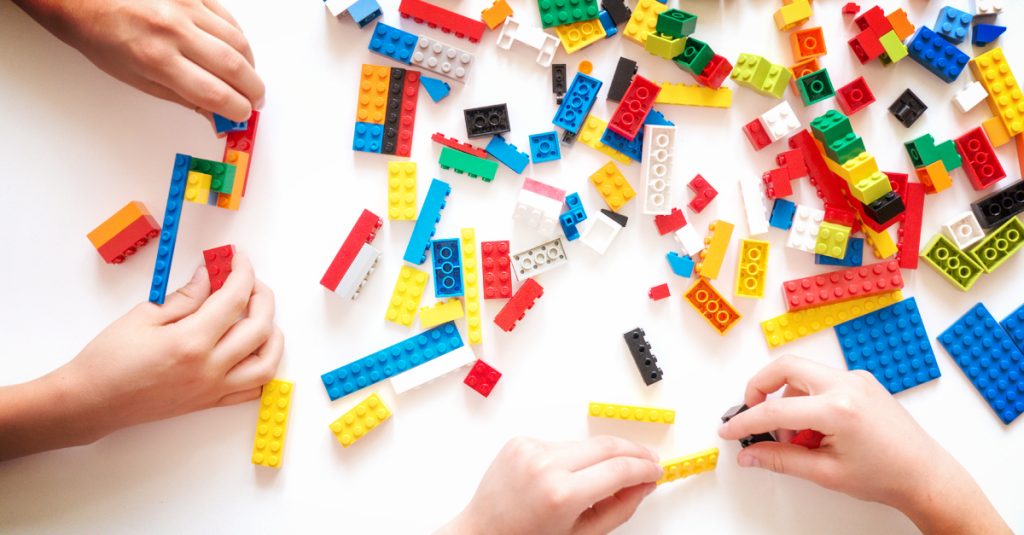 Age recommendation labels are the first tool you have in selecting safe holiday toys. Anyone purchasing toys for young children wants to familiarize themselves with the choking hazard-small parts label.
Age recommendation labels are the first tool you have in selecting safe holiday toys. Anyone purchasing toys for young children wants to familiarize themselves with the choking hazard-small parts label.
Warning: Choking Hazard – Small Parts. Not for Children Under 3 Years
Each year, children suffer choking injuries and deaths after consuming food or putting small objects in their mouths. In the late 1970s, the Consumer Product Safety Commission (CPSC) led a three-month study of an estimated 3,800 injuries involving children under age 10. It was determined that children under age 3 suffered more than half of all these injuries. More than 50 children under 3 died in accidents involving small parts.
With those numbers, the CPSC announced the small parts regulation, which became effective on January 1, 1980. Since then, toy manufacturers have been required to test toys and parts using the small parts cylinder test.
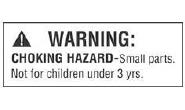
This cylinder has a diameter of 1.25 inches. The bottom of the cylinder is slanted, opening 1 to 2.25 inches. Toys which fall through the cylinder must carry the choking hazard – small parts warning and state not for children under 3 years old. Toys may also require labels if they fit through the tube, but break it during subsequent “use and abuse” testing (Source: U.S. PIRG, Trouble in Toyland 2018).
Toys which are too large can be sold without the choking hazard label, though they may require another type of labeling.
Small Parts Warning for Children Between Ages 3 and 6 Years
Any small part intended for children between age 3 and 6 must carry the same labeling: “Warning: Choking Hazard — This toy is a small part. Not for children under 3 years.”
Small Parts Warning – Small Balls
There is a separate federal standard for small balls, according to U.S. PIRG. Balls with a diameter of 1.75 inches are banned for children younger than 3 years of age.
Small balls must carry this age-recommendation label: “Warning: Choking Hazard — This toy is a small ball. Not for children under 3 years.” A similar label is required for toys which contain small balls: “Warning: Choking Hazard–Toy contains a small ball. Not for children under 3 years.”
Toymakers are required to test and use age recommendation labels. All toys intended for children age 12 and younger must undergo third-party testing and meet the most recent version of the federal safety standard, ATSM F963.
But there are times when parents and anyone buying a toy should be skeptical. Toymakers have made errors in labeling and there can be miscommunication between manufacturers and retailers when toys are displayed without packaging. Online product descriptions may not be accurate.
Remember These Toys Have Small Parts!
- Marbles
- Magnets
- Game pieces (such as the Monopoly characters)
- Legos and building bricks
- Small puzzle pieces (and cardboard pieces are a danger because small children can chew them and choke)
- Button batteries
- The clothing and parts on stuffed animals and dolls
- Pens and pencils with caps which can become loose
Additional Toy Safety Standards for Children Age 3 and Younger
While we are talking about small parts, we also want to remind parents of other federal toy safety guidelines for children under 3.
- Toys and children’s products must not have sharp points or edges which can potentially injure children.
- Paints and surface coating cannot contain more than .06 percent lead or other hazardous materials.
- Children’s pajamas, clothing and products which fail to meet flammability limits.
The best way to stay informed is to check the CPSC website for toy safety recalls and product warnings.
Final Points on Toy Safety for Young Children
Carefully inspect all toy sets and stuffed animals before and after purchase. Open boxes, handle the pieces yourself before giving. If you buy online, check if the box matches the online product description. Because of the demand for toys near the holidays, it’s not unusual for shoppers to receive a toy similar to what they ordered.Decide whether the toy will be safe near your child and their siblings. You should always consider younger siblings when buying gifts. If they are not at least 3 or older, wait another year. Also pause if the younger sibling just isn’t ready.
If your children are the right age and ready, purchase a secure container to keep the small parts in. Keep this container separate from other toys in your home and be mindful of not letting small pieces scatter.
Finally, supervise children whenever they play with small parts. Even older children can find themselves in dangerous situations at times when handling small pieces. This is especially true with new toys. So as they play, sit with them at the table or just stay in the room so you can help.
About Breakstone, White & Gluck – Boston Toy Safety Lawyers
 Our Boston personal injury lawyers represent clients in all personal injury matters, including motor vehicle accidents, medical malpractice, premises liability, wrongful death and cases involving injuries caused by defective products and unsafe toys. We share our holiday toy safety series as part of our Project KidSafe campaign.
Our Boston personal injury lawyers represent clients in all personal injury matters, including motor vehicle accidents, medical malpractice, premises liability, wrongful death and cases involving injuries caused by defective products and unsafe toys. We share our holiday toy safety series as part of our Project KidSafe campaign.
To learn more, visit our toy safety page. You can also visit our website to learn more about our attorneys and their experience.
Keep Magnet Toys Off Your Holiday Shopping List
We urge parents to keep magnet toys off your holiday shopping list for young children. High-powered “rare-earth” desk magnet toys are highly dangerous and there are many painful stories of children ingesting them, then fighting for their lives in surgery. But there are also other types of magnet toys, including magnet tile building sets and magnet construction toys. While these are very popular, this doesn’t mean they are safe for your family. Take time to do your research, read age recommendations and really consider your children’s needs.
Magnet Desk Toys or Cluster Magnet Toys
Read by product type:
Magnet Desk Toys or Cluster Magnet Toys
Tile Magnet Toys
Magnetic Construction Sets
Final Word on Safety
Magnet Desk Toys or Cluster Magnet Toys

Cross desktop magnet sets off your holiday shopping list. These have caused hundreds of children injuries.
The Consumer Product Safety Commission (CPSC) has worked to take desktop magnet toys off the market to prevent injuries to children. The problem is the average set has 125 or 216 strong magnet balls, though some have more than 1,000 pieces. The magnets are tiny and are extremely high-powered.
These magnet sets come apart and can be reassembled into unique shapes. In a child’s hands, the magnet clusters may become a necklace, triangle or whatever formation they imagine. When magnets are put in a child’s mouth, they can attract to each other, causing serious injuries in the digestive system as well as blood poisoning. Children usually require surgery for the intense pain.
New Magnet Safety Standard. Prior to 2014, “rare-earth” magnet sets were required to carry age recommendation labeling of 14 and older. In 2014, the CPSC established a federal toy safety standard which required magnets to be large enough to exceed the CPSC’s “small part” standard for toys or that magnetic parts have a force of attraction of 50 kG² mm² or less, according to the CPSC’s Final Rule: Safety Standards for Magnet Sets. The CPSC safety standard effectively made it illegal to sell “rare-earth” magnet sets in the U.S. and there was a positive response, an 80 percent reduction in magnet-ingested injuries, according to The Journal of Pediatrics.
You may guess young children are at the highest risk. But children age 4 through 12 suffered the most injuries in the CPSC’s analysis of ER visits over 5 years, from 2009 to 2013. According to the Federal Register dated October 3, 2014, the agency concluded an estimated 2,900 children had suffered magnet ingestion injuries. Children age 4 through 12 suffered 1,900 injuries – or 65 percent.
Tile Magnet Toys
For all this work, in 2016, the 10th Circuit of Appeals ruled the CPSC’s pre-requisite factual findings were “incomplete and inadequately explained.” The Court vacated the safety standard and remanded it back to the CPSC for further proceedings.
The lawsuit had been filed by Zen Magnets, one of the “rare-earth” magnet makers. The company is now selling its products again, under the Buckyballs and Mandala names, according to Tech Crunch. Again, we stress, please don’t buy these toys, especially if you have children or a pet. The parts are small and scatter easily. If you don’t find our blog compelling, we encourage you to read this article in STAT, called “Toy magnets are harming kids again. They need to be banned – for good,” August 6, 2019.
Tile Magnet Toys
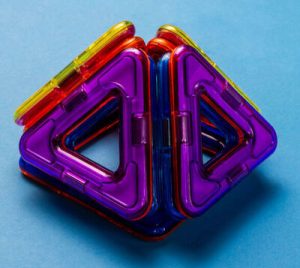
Magnet tile toys
These are magnets encased in plastic triangle and square shapes. These are popular, marketed as toys that help stimulate learning and imagination. Some of these are designed for children under age 3, some for children ages 3 and up; others are for age 6 and up. If you do purchase one of these sets, carefully check the age recommendation and secure it in a container out of reach of children.
There has been at least one case of the encasements opening and a child swallowing magnets. Last December, a Wisconsin mother shared her frightening story on social media and the Today Show reported on it. The woman’s 4-year-old son had swallowed 13 magnets from one of the tile magnet kits. After he began vomiting, she rushed him to a local hospital where surgeons had to remove part of his colon, intestine and appendix. The product manufacturer was not identified in the story.
The CPSC regularly issues recalls about toys containing small magnet parts. One of the largest recalls involving tile magnet building toys came in 2006, when Mega Brands America, Inc. recalled 4 million Magnetix Magnetic Building Sets. The recall was first announced on March 31, 2006 and re-issued and expanded in April 2007. The CPSC reported one child had died and one child had suffered aspiration. 27 others had suffered intestinal injuries, according to the CPSC news release.
The tragedy could have claimed even more lives; there had been 1,500 reports of magnets coming apart. Although the Magnetix Magnetic Building Sets were labeled age 6 and older, at least 10 injuries involved older children, up to age 11.
Magnetic Construction Sets
According to CBS News, in October of 2006, Mega Brands America settled a lawsuit with 15 victims for $13.5 million.
In 2009, consumers learned there was further wrongdoing in this case. On April 14, the CPSC announced that Mega Brands America, Inc. had agreed to pay a $1.1 million civil penalty to settle allegations that the company (and Rose Art Industries, which it had acquired) had failed to provide timely information about product dangers to children.
Magnetic Construction Sets
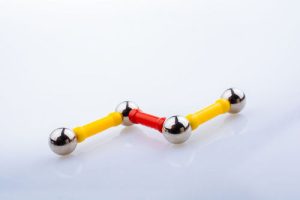
Magnet construction sets typically have magnets snap together with other stick pieces.
These sets include plastic rods and balls which can be snapped together with the magnet attraction.
Final Word on Safety
One problem is Consumer Reports found a full range of age recommendations across several popular products – and manufacturers unwilling to answer questions. Since age recommendations are the most fundamental tool consumers have, we recommend steering clear of these.
Final Word on Safety
The CPCS is responsible for overseeing product recalls and a quick search of its database can glean valuable information for parents. Visit www.cpsc.gov and search by product name or type of products. You can also visit the CPSC’s magnet information center.
With magnet toys, product regulations and age recommendations continue to change. They are very challenging to bring into any home safely, but especially homes with children of various ages and development skills and pets. In the end, you must make your own decision, but we urge you to be overly cautious and purchase other toys. There are so many other toys out there which can provide your child with a safe and enjoyable experience.
Breakstone, White & Gluck – Boston Toy Safety Lawyers
Breakstone, White & Gluck is a Boston law firm specializing in personal injury, medical malpractice and product liability. We wish Massachusetts families a safe and healthy holiday season and share our toy safety tips as part of our Project KidSafe campaign.
If you have been injured, contact Breakstone, White & Gluck to learn your legal rights at 800-379- or 617-723-7676. You can also use our contact form.
After Millions of Recalls, New Safety Standard Proposed for Infant Sleepers

Fisher-Price recalled its Rock ‘n Play sleeper in April.
Last April, Fisher-Price made its jarring announcement: 10 babies had died in its sleepers after rolling from their backs to their stomachs. Fisher-Price urged parents to take children out of the sleepers once they reach 3 months old or begin turning themselves over.
This advisory didn’t stand. Soon thereafter, Consumer Reports published the results of its own investigation, which identified 32 infant deaths. Within the week, Fisher-Price and Mattel, its parent company, had recalled 4.7 million unsafe sleepers.
Now six months later, The Washington Post reports that 59 babies have died in Rock ‘n Play sleepers. At least two other companies, Kids II and Dorel Juvenile Group USA, have recalled their infant sleeper products. At the time of the recall, 5 infants had died on the Kids II sleepers.
Last week, the Consumer Product Safety Commission (CPSC) proposed a new safety standard for infant sleep products. This would limit the seat back angle for sleep to 10 degrees or less.
Why Was the Fisher-Price Rock ‘n Play So Dangerous?
Fisher-Price introduced the Rock ‘n Play in 2009, inventing the category of inclined sleepers, which allowed babies to sleep at a 30 degree angle. From the start, this design completely disregarded the American Academy of Pediatrics’ safe-sleep guidelines, which recommend babies sleep on their backs in an empty crib or bassinet to avoid accidental suffocation.
One problem was Fisher-Price didn’t do thorough safety testing or consulting with medical experts. But you can’t overlook the fact that Fisher-Price has been a giant in children’s products and how that influenced the discussion. As one pediatrician told The Washington Post, “This is not something I’d recommend using. But parents see that it’s from Fisher-Price and think, ‘They wouldn’t be able to sell anything that isn’t safe.’ ”
New Research Findings
The CPSC asked an assistant professor of orthopedic surgery who specializes in infant biomechanics to lead a study on inclined sleep products. The professor is based at the University of Arkansas for Medical Sciences. She and her team found evidence that babies age 2-6 months on average who were placed in inclined sleep products were at a higher risk of suffocation, when compared to a flat crib mattress.
- Her team concluded that none of the inclined sleep products tested were safe for infant use.
- The university team suggested the angle of the incline be no more than 10 degrees. The lying surface should be flat and rigid, not soft or plush-like.
- The team reported that babies who were placed on their stomach in their sleepers or who rolled over had to exert as much as 200 percent more core strength than those on a flat crib mattress.
- Finally, the university team reviewed police reports and interviews from 91 cases of infant suffocation. In many cases, the caretaker reported they had never seen the infant roll over before.
This was a recurring point in the team’s findings. Many of the children were rolling over for the first time when they were found.
Here is additional information for further reading:
UAMAS Research into Baby Biomecanics Shows Issues with Infant Inclined Sleepers, University of Arkansas
After Infant Deaths, Fisher-Price Rock ‘n Play Sleeper is Recalled, Massachusetts Injury Lawyer Blog
More Infant Sleep Products Linked to Deaths, Consumer Reports
Consumer Product Safety Commission: No More Inclined Sleepers, Chicago Sun Times
Free Consultation – Boston Product Liability Lawyers
With more than 100 years combined experience, Breakstone, White & Gluck specializes in plaintiff representation in product liability cases. We represent clients throughout Massachusetts, from Boston to Cambridge to Plymouth, Brockton and Cape Cod to the North Shore.
If you have been injured, learn your legal rights. For a free legal consultation, contact our firm at 800-379-1244 or 617-723-7676. You can also use our contact form.
Ford, GM and Nissan Make Auto Recall Headlines in 2019
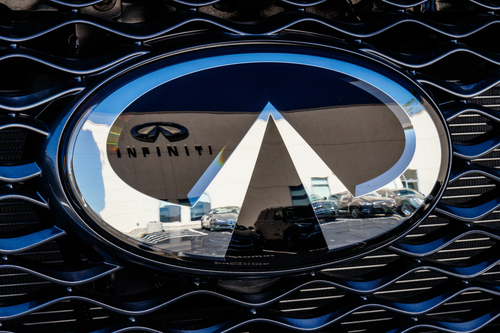
Nissan has recalled 1.23 million vehicles because the backup camera displays are not working properly (Sept. 2019)
It is always wise to stay informed about your car and to regularly check for auto recalls. This was the lesson of the past decade and is sound advice again in 2019, as General Motors, Ford and Nissan have announced new safety defects.
General Motors Recalls
General Motors (GM) has issued several recalls during 2019, most notable 3.5 million SUVs and trucks with faulty brakes. This recall was announced in mid-September and was associated with 13 related injuries and 113 car crashes, according to Consumer Reports. This was a known problem in some GM models, including the Chevrolet Silverado, GMC Sierra pickup trucks and the Chevrolet Tahoe.
The National Highway Traffic Safety Administration (NHTSA) has been investigating since November 2018, when it received complaints. General Motors has been repairing vehicles since December 2018. A Canadian recall was issued in June.
The GM vehicles have a defect with a powered brake-assist system, potentially impacting the amount of pressure required to stop. There are several warning signs: drivers may experience a vibrating brake pedal, hear a ticking noise or see a message reading “Service Brake Assist” on the dashboard. GM dealers can re-program the braking software at no charge.
Nissan Recalls
Don’t trust the backup camera display if you are driving a Nissan. The automaker has just recalled 1.23 million vehicles – including many of its most popular models – because the backup camera displays are not properly returning to their default settings. This recall involves 2018 and 2019 models of the Nissan Altima, Nissan Murano, Nissan Pathfinder, the Infiniti and numerous other models. No injuries were reported. Read more.
Ford Recalls
Ford has also made negative headlines. Back in January, the automaker called back 953,000 vehicles worldwide as part of the ongoing Takata airbag recall. More than 782,000 vehicles were in the U.S. market. The recall covers 2010 through 2014 models, including the Ford Edge, Ford Ranger, Ford Fusion, Lincoln MKZ, Mercury Milan and the Ford Mustang.
Automakers continue to recall the Takata airbags, which have caused dozens of deaths and hundreds of serious injuries. The deadly recall has now touched 41.6 million vehicles, according to the NHTSA. While these recalls were first announced years ago, the NHTSA says the repairs must happen in phases over time. Priority has been given to the oldest vehicles in Florida and other warm weather states.
In August, more bad news and another recall. Ford announced that more than 550,000 more trucks and SUVs in North America had glitches – the backseats were not providing proper restraints. Among the vehicles: certain 2018 through 2020 models, including F-150 pickups, Super Duty trucks, Explorer SUVs and Expedition SUVs.
Toyota Recalls
In August, Toyota recalled 135,000 Corollas and Matrix hatchback vehicles from model years 2005 to 2008, according to Cars.com. These vehicles had airbags which needed replacement due to the Takata recalls, but these repairs were previously made and were not related to the latest recall.
Check Your Vehicle for Safety Recalls
You can visit the NHTSA website to check if your vehicle has been subject to a recall.
Boston Product Liability Lawyers – Free Legal Consultation
With more than 100 years combined experience, Breakstone, White & Gluck is known as one of the best personal injury law firms in Massachusetts. We have extensive experience handing cases which involve car accidents, truck crashes and pedestrian injuries in Boston and other communities. In some cases, a defective part may contribute to a car crash and injuries. Our attorneys have investigated and aggressively represented clients in these cases, ultimately obtaining the financial compensation they deserve.
If you have been injured in a car accident in Massachusetts, learn your legal rights. For a free legal consultation, contact us at 800-379-1244 or 617-723-7676 or use our contact form.



